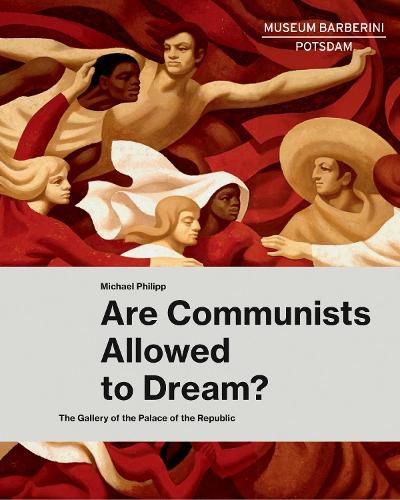Readings Newsletter
Become a Readings Member to make your shopping experience even easier.
Sign in or sign up for free!
You’re not far away from qualifying for FREE standard shipping within Australia
You’ve qualified for FREE standard shipping within Australia
The cart is loading…






This collection of sixteen large-scale paintings, commissioned 1975 by the East German government, holds a mirror up to the social and political aims of former East Germany before the onset of reunification. The Palace of the Republic was opened in 1976 to house East Germany’s parliament and to provide a cultural and historical center for the public to enjoy. During its construction, the government commissioned sixteen artists to create paintings in response to the question, Are Communists allowed to dream? Artists like Bernhard Heisig, Wolfgang Mattheuer, Willi Sitte, Werner Tubke, Walter Womacka, and Hans Vent contributed large-size works. They painted in their personal styles, but still stayed within the tradition of realistic painting in East Germany. With the fall of the wall and reunification, the paintings were removed from public view in 1990. The palace itself was demolished in 2006. This volume accompanies the first public exhibition of the paintings since 1995 and sheds new light on the East German government’s understanding of art and its idea of self-representation. AUTHORS: Ortrud Westheider is director of the Museum Barberini in Potsdam, Germany. Michael Philipp is Chief Curator of the Museum Barberini in Potsdam, Germany. SELLING POINTS: . Not widely displayed: The works in this book haven’t been seen since 1995. . Stylistically broad: It is facinating to see different artists’ responses and styles to the same general question. . GDR artists: This book showcases artists who were not labeled degenerate during the era of the GDR and were therefore the few not banned. 40 colour illustrations Leipzig school: Some of the painters in this book are famous members of the Leipzig School and in the 1960s made Leipzig a center of fine arts.
$9.00 standard shipping within Australia
FREE standard shipping within Australia for orders over $100.00
Express & International shipping calculated at checkout
This collection of sixteen large-scale paintings, commissioned 1975 by the East German government, holds a mirror up to the social and political aims of former East Germany before the onset of reunification. The Palace of the Republic was opened in 1976 to house East Germany’s parliament and to provide a cultural and historical center for the public to enjoy. During its construction, the government commissioned sixteen artists to create paintings in response to the question, Are Communists allowed to dream? Artists like Bernhard Heisig, Wolfgang Mattheuer, Willi Sitte, Werner Tubke, Walter Womacka, and Hans Vent contributed large-size works. They painted in their personal styles, but still stayed within the tradition of realistic painting in East Germany. With the fall of the wall and reunification, the paintings were removed from public view in 1990. The palace itself was demolished in 2006. This volume accompanies the first public exhibition of the paintings since 1995 and sheds new light on the East German government’s understanding of art and its idea of self-representation. AUTHORS: Ortrud Westheider is director of the Museum Barberini in Potsdam, Germany. Michael Philipp is Chief Curator of the Museum Barberini in Potsdam, Germany. SELLING POINTS: . Not widely displayed: The works in this book haven’t been seen since 1995. . Stylistically broad: It is facinating to see different artists’ responses and styles to the same general question. . GDR artists: This book showcases artists who were not labeled degenerate during the era of the GDR and were therefore the few not banned. 40 colour illustrations Leipzig school: Some of the painters in this book are famous members of the Leipzig School and in the 1960s made Leipzig a center of fine arts.